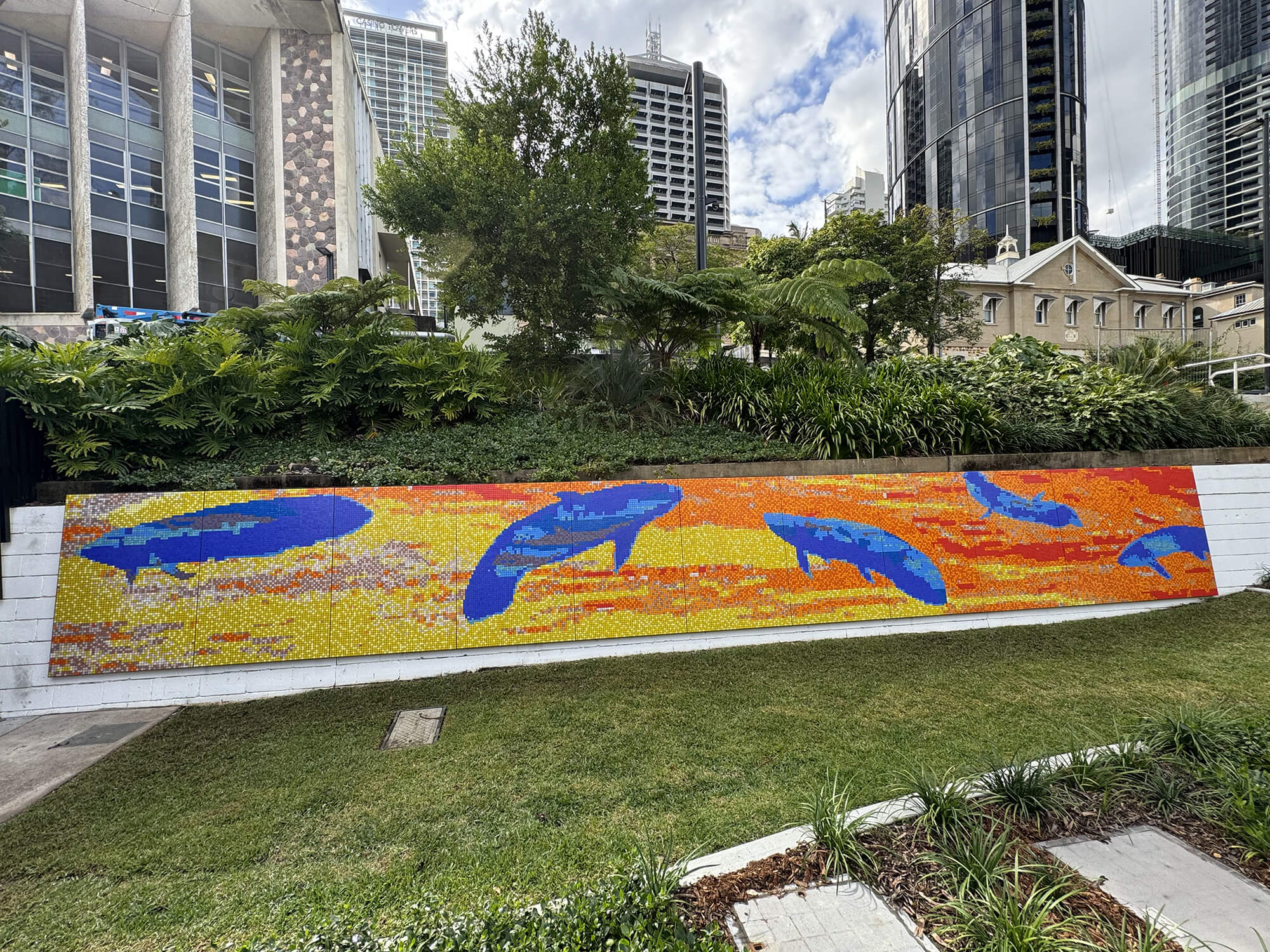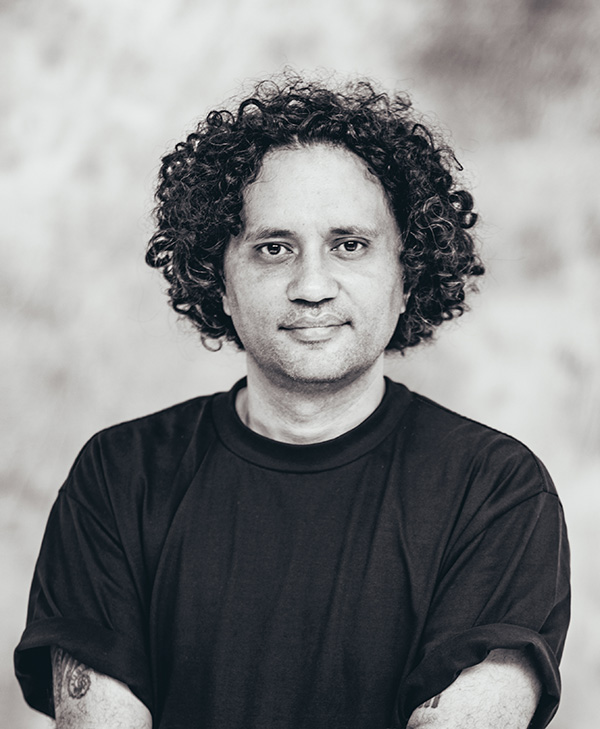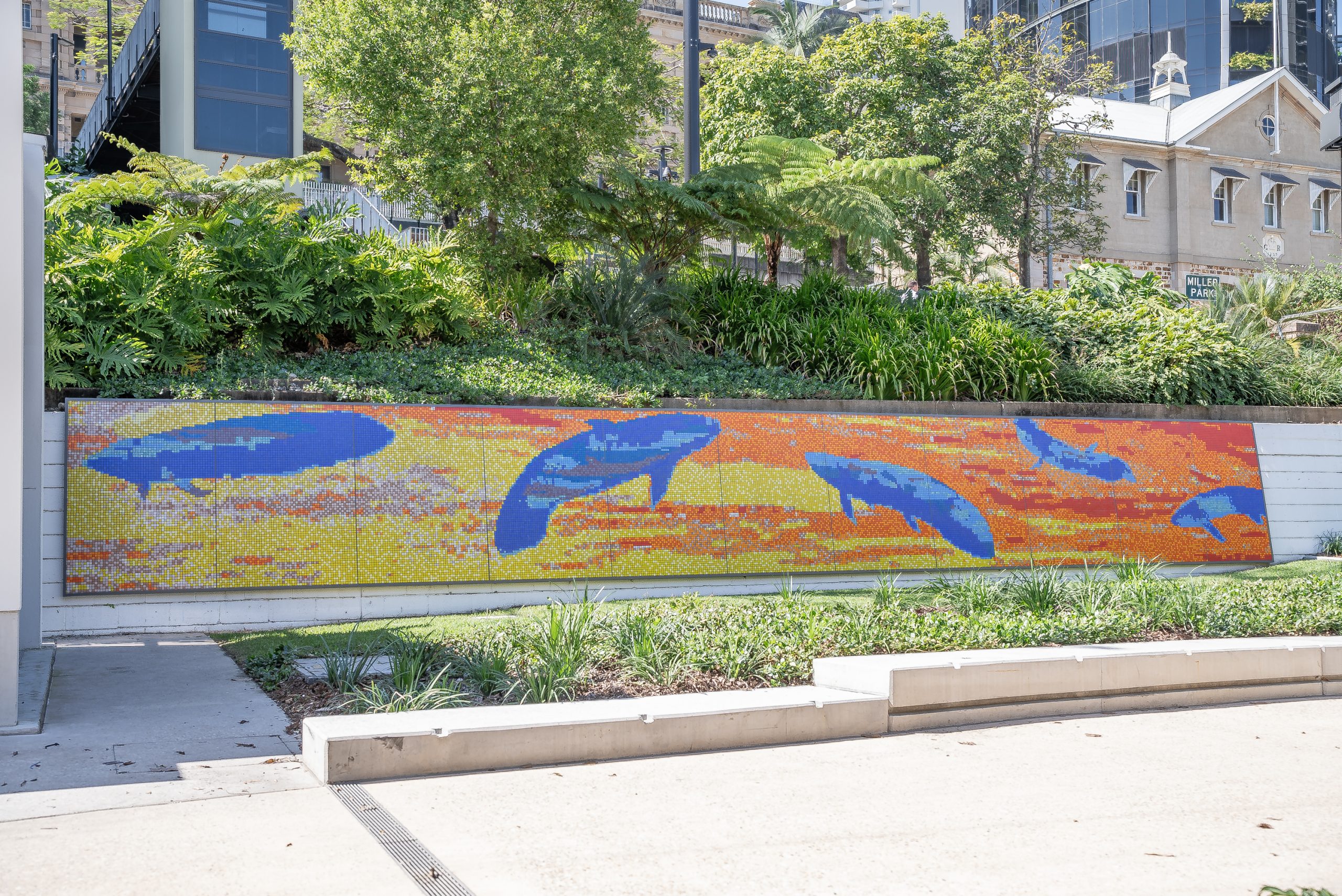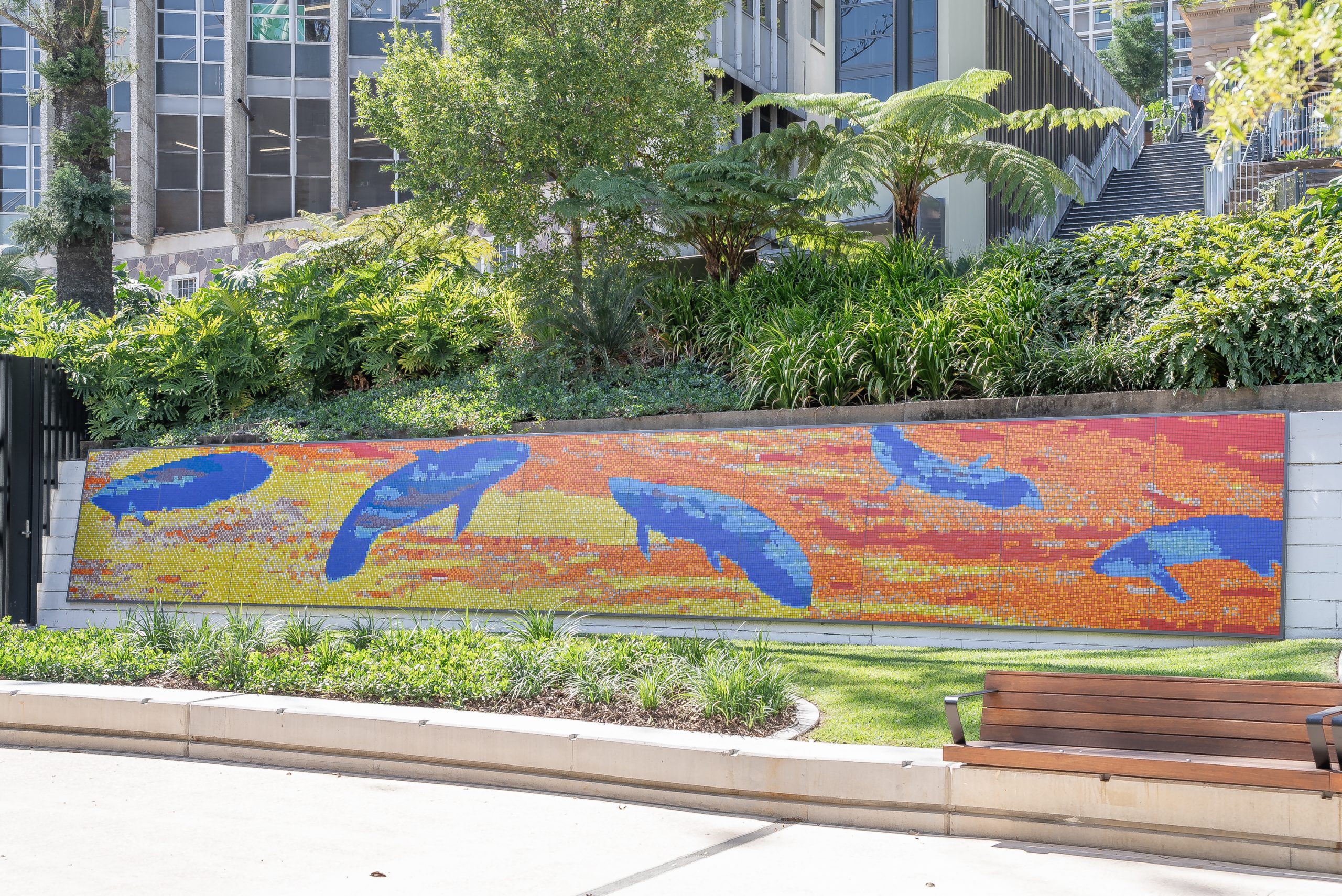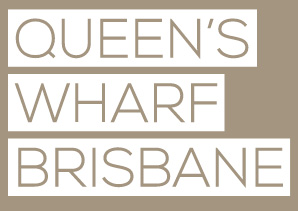This panoramic mural depicts the Australian lungfish seemingly floating amongst a clouded and vibrant Queensland sunrise. The fiery skyward hues are indeed reflections on the waters of the Maiwar / Brisbane river, beneath which several silhouettes of prehistoric lungfish rise to the surface.
The Australian lungfish (Neoceratodus forsteri) is an ancient and enigmatic fish whose origins date back millions of years and is endemic to the South East Queensland region. It has gills as well as a single lung, which enables it to breathe under water and to surface for breaths of air. Despite its longevity and evolutionary adaptations, the lungfish is listed as a ‘vulnerable’ species and therefore maintaining its river habitat is vital to the future survival of this iconic fish. The mural also references ‘human memory’ through its use of heavy pixelation.
“I am interested in how visual memories fade over time, often leaving only a small amount of information and cornerstone detail, forcing us to mentally squint to recall past experiences and environments more clearly. Up close the imagery is abstracted into segments of pixelated colour whilst at a distance the form and features of the Australian lungfish take shape.”
The mosaic mural features 49,280 glass tiles and was constructed in collaboration with mosaic Artist Dom Johns at his studio in Koah, North Queensland.


